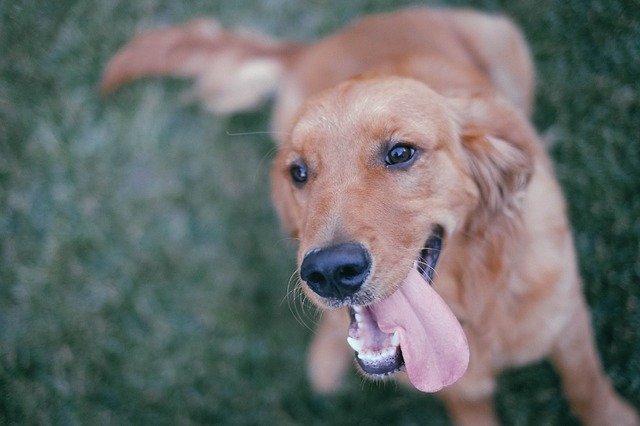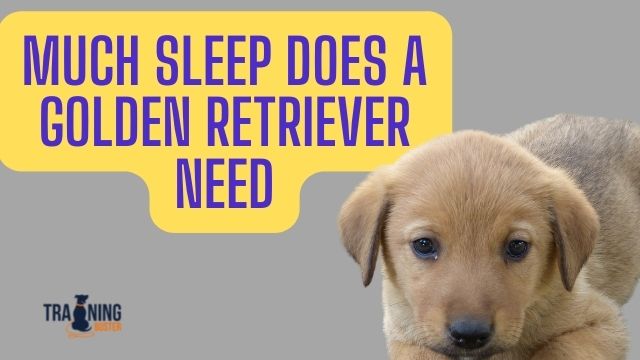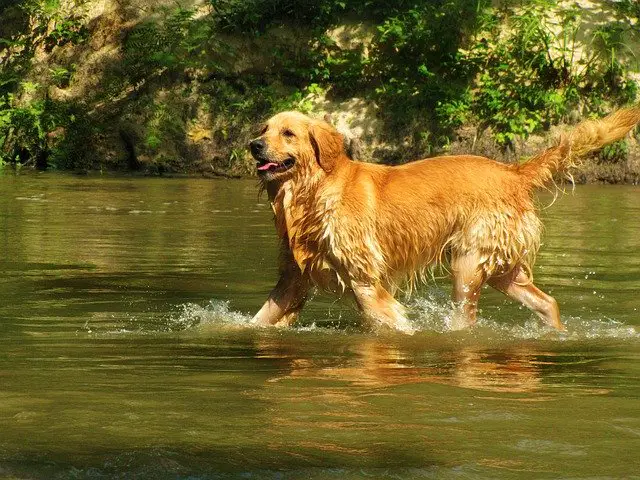
They are the Golden Retriever, but this isn’t necessarily true – there different shades of Golden Retriever out there.
There are creamy golden retrievers, light golden retrievers, black golden retrievers and maybe more. But do Golden Retrievers get darker as they get older? Let’s take a look:
Your Golden Retriever’s History
How much do you know about your Golden Retriever’s background? What kind of coat do their parents and their other parents have?
Getting to know how your Golden Retriever’s close family looked at each stage of their life should give you a good idea of how your Golden Retriever’s marking will look at each stage of their life.
That being said, it will be difficult to collect an extensive amount of information about your Golden Retriever puppy’s genealogy. Also, even if you do have quite a complete idea of your Goldie’s background, their coat could still surprise you.
It’s common for a light Golden Retriever to give birth to puppies who grow up to be much darker.
But did you know that a Golden Retriever once gave birth to a puppy who was green? This occurred because a pigment from the mother’s placenta had mixed with her amniotic fluid.
A Golden Retriever Puppy’s Ears Hold a Clue
You may have noticed that very young puppies, in general, tend to be quite pale and the same is usually true of Golden Retriever puppies. But take a look at the tips of your Golden Retriever puppy’s ears.
The tips of a Golden Retriever puppy’s ears do not usually match the rest of their coat. The tips of their ears generally tend to be a little or a lot darker than the rest of a Golden Retriever pup’s coat.
If your Golden Retriever puppy’s ears do look very different compared to the rest of their coat, check out their back, too. Golden Retriever puppies often develop a darker stripe along their back that matches with the tips of their ears in indicating the Goldie’s likely adult coat color.
The Golden Retriever Double-Coat
Did you know that your Golden Retriever puppy will only start to grow the hairs for their adult coat when they are around three to four months old? Before this, they will only have a fluffy, downy coat that looks nothing like their adult coat will.
These coarser hairs are called guard hairs. The slightly darker guard hairs will push through the softer puppy coat to form an adult Golden Retriever’s outer coat, while the puppy fur remains, forming the Goldie’s undercoat.
Environmental Differences in the Golden Retriever Coat
The lighter Golden Retriever undercoat helps to keep your pooch warm. So, if your Goldie has been spending lots of time outdoors, expect to see your Golden Retriever’s coat getting lighter in color (if they haven’t been rolling in anything).
Whereas a Golden Retriever who spends a lot of time inside is likely to have a dark-colored coat.
As well as this, the Golden Retrievers bred in Britain are said to usually have cream coats, whereas the American Golden Retriever typically turns out to be a darker shade of gold than this. Both coats are long, wavy, and feathery though.
What are The Common Shade Of a Golden Retriever?
There are many shades of a golden retrievers coat, the main shades are:
- Dark Golden
- Light Golden
- Cream
- Red Golden
- Yellow Golden
Should a Golden Retriever Shed?
Yes, for sure – this is completely normal for the Golden Retriever breed.
There are two main times of the year in which it is expected for your Golden Retriever to shed excessively – during the late Spring, your Golden Retriever will shed their light-colored insulating puppy fur undercoat in preparation for the upcoming sweltering weather.
Then, during late Fall, your Golden Retriever should be shedding their newly formed light-colored undercoat again to help them to keep warm in the upcoming Winter.
But if your Golden Retriever is shedding excessively at times outside of Spring and Fall, there are a number of medical conditions this could be a symptom of. So, seek advice from your veterinarian, especially if the shedding is accompanied by another symptom.
Grooming Your Golden Retriever’s Coat
No matter whether your Golden Retriever’s coat is currently light-colored or a darker red or brown, brushing your Golden Retriever every day is imperative to keep their unique double coat in it’s healthy, glossy condition. This will help to distribute the oils in your Golden Retriever’s skin evenly.
A Golden Retriever’s coat needs to be bathed once a month at least, too, though it’s no problem if your Goldie pup likes to roll in things and needs bathed more often.
What Should a Golden Retriever Eat?
To keep your Golden Retriever’s coat in it’s glossy, stunning condition, oily foods like chia seeds or salmon will help to keep the coat from drying out. The omega 3 in these foods will also heal any skin inflammation and will soften your Goldie’s skin, too.
Eggs are highly beneficial to a Golden Retriever’s skin and coat, as well. The vitamin A found in eggs helps your Golden Retriever to produce cells, while zinc aids in the creation of proteins and promotes cell division.
Even the yolks alone are highly beneficial to skin health, containing biotin which helps with dry skin and itching.
Feeding your Golden Retriever cranberries may help prevent skin cancers. But cranberries mainly help with treating skin wounds and otherwise keeping the skin in good condition.
Did you know that sweet potato contains betacarotene? This is a form of vitamin A, also found in eggs.
They also contain vitamin E and vitamin C, a vitamin that boosts the production of collagen and protects your Golden Retriever’s skin from the sun, as well as promoting the healing of wounds. What’s more, is, their vitamin C content actually increases with being cooked.
But before you keep reading, I’d love for you to take just a second and check out Pet Plate, a Flexible dog food Subscription. its Vet-designed, human-grade ingredients. And my dogs absolutely love it.
What About Senior Golden Retrievers?
Has your Golden Retriever’s coat gotten a lot darker since they were a puppy, but now that they are a senior dog you notice it graying in places?
Don’t worry about this – graying around a senior Golden Retriever’s face and their muzzle starting at 5 or 6 years of age is completely normal.
So in conclusion, yes – it is very likely for a healthy Golden Retriever’s coat to darken at least a little as they grow up, especially if they have dark ears like a puppy. When they are a senior, their coat will likely lighten slightly again, in localized areas.
For more about Golden Retrievers see my other articles below
- Can my Golden Retriever sleep outside?
- Do Golden Retrievers Get Along With Small Dogs?
- Do Golden Retrievers Have Separation Anxiety?
- How Long Should I Exercise My Golden Retriever Puppy?
- How to protect a golden retriever’s paws in summer
- How Much Sleep Does a Golden Retriever Need a Day
By Michelle McDaid


